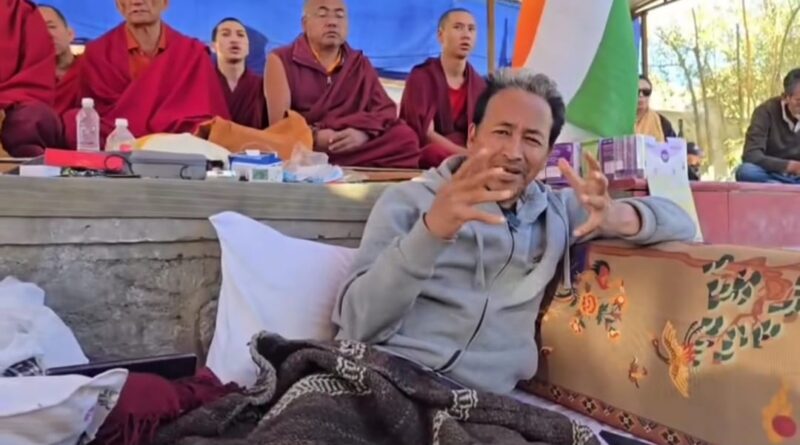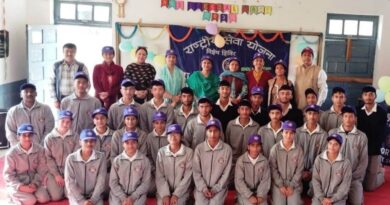People’s Organizations of Himachal issued statement in support of Ladakh’s non-violent movement and against government repression
Organizations expressed their support for the non-violent people’s movement that has been ongoing in Ladakh for the past five years. Due to the prolonged stalling of the legitimate demands of the peaceful movement by the central government, public anger and distrust towards the government have grown. On September 24, 2025, in response to the deteriorating health of people on a hunger strike, people took to the streets in anger, during which some unfortunate incidents occurred. However, instead of making efforts to establish peace, the government resorted to lathi charges and opened fire on the unarmed protestors to provoke them. In this firing, 4 local individuals were martyred and more than 50 were injured. We strongly condemn this firing. We appreciate Sonam Wangchuk’s appeal to stop the violence in Ladakh and express the hope that the movement remains peaceful. We also condemn the local administration and central government for their negligent attitude in spoiling the situation regarding an issue that can be resolved through dialogue. It is the government’s duty to not let a non-violent movement turn violent by delaying it.
The people’s movement for fulfilling the democratic aspirations of the people of Ladakh, including the region under the Sixth Schedule of the Constitution, employment, and the restoration of a people’s representative system in Ladakh, is constitutional and justified. Last year, to get their demands accepted, the people of Ladakh, under the leadership of Sonam Wangchuk, also attempted to make their point by undertaking a foot march from Ladakh to Delhi for almost a month. Why is the matter being delayed, forcing the need for repeated movements? It is clear that the government is failing to establish dialogue with the people of Ladakh, which is why the people repeatedly have to resort to the path of agitation.
The government’s retaliatory, baseless propaganda against Sonam Wangchuk, the investigations being carried out by agencies with a vindictive intent, and the proceedings to take back the land allotted to the university run by him are condemnable.
We demand that the government immediately initiate discussions with the struggling people of Ladakh on all four demands of the movement and find a just solution in the interest of Ladakh and the country.
The main demands of the Ladakh movement are as follows:
- Grant Ladakh full statehood.
- Include it in the Sixth Schedule of the Constitution to ensure local decisive control over resources and stop the indiscriminate exploitation of resources to protect the ecosystem and environment.
- Provide two seats in the Lok Sabha.
- Give priority to local residents in jobs.
After the removal of Article 370 in 2019, the people of Ladakh welcomed becoming a Union Territory. However, the provision for an elected Legislative Assembly was not included, nor was any other protective provision made for this tribal-majority region. 90% of Ladakh’s population is tribal. In such a scenario, the people raised the demand with the Centre to include Ladakh in the Sixth Schedule and provide an elected assembly so that the local tribal people get autonomy, a chance to participate in the democratic process, and protection for local resources and culture. The Union Home Minister and the Minister for Tribal Affairs also gave assurances to the people regarding this. In its manifesto for the 2020 local body elections, the BJP also promised to include Ladakh in the Sixth Schedule, a promise which remains unfulfilled to date. This is why people have been agitating repeatedly.
In reality, the government’s actual intention was to exploit the natural resources available in Ladakh and grant a license for the open loot of local resources to corporations/businessmen, for which the legal path was cleared.
Brief details of proposed and ongoing construction, mining, and power projects in Ladakh
- 13 GW Solar & Wind Energy Project: Approximately 48,000 acres (about 80 square kilometers) of land has been acquired in the Pang area. On March 21, 2023, information was given in the Rajya Sabha that 250 square kilometers of land would be acquired in Pang, Debing, and Kharnak for solar and wind energy. Additionally, seven hydropower projects for 2,070.2 MW power generation are also being discussed.
- Transmission Line: Survey work is currently underway for laying a 20,000 MW power transmission line from Pang to Kaithal. Thousands of acres of land in Lahaul, Manali, Mandi, Sundarnagar, Bilaspur, and Nalagarh will be acquired for this. Budget provision has already been made. Currently, all power-related projects are being undertaken by central government public sector investments and others.
- Railway Line: The survey work for the plan to lay a 490 km long railway line from Bilaspur to Leh has been completed. Roads (750 sq km), airports (39 helipads), 29 new bridges, and other construction works are being pushed forward in the name of promoting tourism.
- Mining: Ladakh has valuable, high-quality strategic and rare minerals like gold, copper, borax, lithium, thorium, sulfur, and breccia, etc. With the intent of exploiting these, the government is planning to implement hundreds of mining projects, and surveys of mining blocks are being carried out.
- Stone Mining: Ladakh has immense reserves of granite, marble, and limestone, and plans for their exploitation are underway. This is why the construction of railways, tunnels, and wide all-weather roads is happening. Over a hundred mining leases have already been allocated.
Thus, in the future, the large-scale exploitation of resources, mining, land grabbing, and settlement of a large outside population will have a very adverse impact on the local weather cycle, glaciers, ecology, and environment.
The large construction, mining, four-laning, large solar parks, and big hydropower projects in Ladakh and other parts of the high Himalayas are detrimental to the Himalayan ecology and environment. For the past several years, the people of the Himalayas have been facing disasters, the main reason for which, besides global warming, are our aforementioned development works which have intensified these disasters.
In the national interest, the central government should not allow the sentiment to develop among the people of this frontier region that no one is listening to them. The people of Ladakh have always been committed to national security. If democratic power comes into their hands, they will only work for the good of the country.
Condemning the firing incident strongly, we demand that immediate peace efforts be activated to restore peace and the people’s voice be heard. There is a danger of harm to the local environment and local economic interests due to the corporate commercial exploitation of local resources and their control by big capitalist companies, leading to over-exploitation and lack of local control.
Protecting Ladakh’s environment or glaciers is the paramount national interest. In this era of climate change, when the entire Himalayas are in the grip of natural disasters, there is a need to listen to Ladakh’s voice seriously.
The government’s negligence in resolving the issues of this sensitive region, surrounded by two hostile neighboring countries, could prove costly for the country.
Therefore, we demand from the government:
- The NSA be withdrawn against environmentalist Sonam Wangchuk, and he and other arrested activists be released immediately and unconditionally. Immediate assistance and adequate compensation be provided to the victim’s families. A fair and speedy judicial inquiry into the repression in Ladakh be conducted, and the guilty be given strict punishment.
- The long-standing demands of the local people regarding social, political, cultural, and environmental and ecological protection be heard seriously and resolved.
- A ban should be imposed on large constructions, large solar parks, large hydropower projects, mining, and other anti-mountain activities in the entire Himalayan region, including Ladakh, to protect the Himalayan environment and ecosystem.
- A Himalayan Policy, based on local development planning that takes into account the ecology, geomorphology, geology, and geography of the Himalayas, should be ratified for the development of the Himalayas.



